505 Views
Pesky Pests

by
Keller Pest Control
(IC: professional)
The American cockroach has reddish-brown wings with light markings on thorax. It's also commonly known as the water bug, flying water bug or palmetto bug. These large cockroaches can grow to exceed 2 inches in length.
Like all cockroaches, it is omnivorous and will eat virtually anything people will and many things we won't. Also, it has shown a marked attraction to alcoholic beverages, especially beer.
This cockroach thrives in warm, damp environments, such as sewers, steam tunnels, basements, crawl spaces, and boiler rooms . When an American cockroach population infests a human home, the insects are drawn to food storage and preparation areas, as well as moist locations.
Unlike other cockroach species, American cockroaches are good flyers. They also gather together in open spaces, while other domestic cockroaches tend to hide in cracks and crevices.
Bed bugs are flat, reddish-brown, oval insects about 3/16-inch long or the size of an apple seed. Swollen and reddish after a blood meal.
Habitat:
Cracks and crevices including mattress seams, sheets, furniture, behind baseboards, electrical outlet plates and picture frames. Often found in hotels, where they can travel from room to room and in visitors' luggage.
Diet:
Feed on blood.
Reproduction:
Females can deposit one to five eggs a day, and may lay 200 to 500 eggs in a lifetime. Under normal room temperatures and with an adequate food supply, they can live up to a year.
Contrary to popular belief, bed bugs are not a sanitation issue. They don't discriminate and can be found in any hotel and any home, regardless of size, hygiene, or cleanliness, as well as dormitories and cruise ships.
Once a bed bug finds its way indoors, it can move from room to room by traveling on clothing and luggage or through pipes and vacuum cleaners . This tendency to hitch-hike - as well as a bed bug's ability to survive for long periods of time without a blood meal - makes proper prevention and control steps even more important.
Experts believe bed bugs' recent increase in prevalence in the U.S. is due to an increase in international travel. That, combined with increased media coverage on bed bugs, has also heightened awareness of these blood-sucking pests among the general public.
Bed Bug Bites
While bed bugs are not known to carry disease, they can leave behind itchy, bloody welts and can cause allergic reactions. Bedbug bites can be distinguished from other insects by their orderly rows, likely caused by a single bug.
Bites tend to disappear within a few days, some individuals may experience extreme irritation and rashes. If you develop a rash after being bitten by a bedbug, avoid scratching the affected area. Antibiotic creams may help to alleviate itching and decrease the odds of infection. If the rash persists or becomes infected, contact a medical professional immediately.
Treatment
Vacuuming and laundering at high temperatures provides short-term relief, but if there are bedbugs on a mattress cover, it is likely that bedbugs and their eggs are also present within the mattress, sheets and elsewhere within a home. Although vinyl covers are also sometimes used to prevent mattress infestation, bedbugs can thrive in a variety of locations indoors
Typically glossy black but may also be dark brown to light brown. black widows are identified by red hourglass markings on the underside of their abdomens.
Black widow spiders favor dark, secluded areas such as crevices and woodpiles. They construct irregular, scaffold-type webs usually near the ground level. These webs are almost always constructed in a protected site such as among items piled together, beneath boards, in firewood, and between boxes.
Although black widow spiders are named for the female's propensity to kill the male after mating, this behavior rarely occurs outside of captivity. In natural conditions, males almost always successfully elude females after mating.
It is the females that are capable of injecting venom. In extreme cases, the venom of the black widow spider severely weakens the nerves and the brain, leading to impaired breathing, body aches and nausea.
Vary in color from dull yellow to tawny, dark brown. The abdomen of the brown recluse has no stripes or spots but they are best distinguished by a fiddle-shaped pattern close to the eyes
Brown recluse spiders dwell in dark, sheltered places and can be found in homes, barns and basements, as well as outdoor habitats. Webs tend to appear disorganized and are built most commonly near ground level. The spider is a hunter, so the web is not intended to catch prey.
Brown recluse spiders are shy and rarely bite unless provoked. Bites sometimes go unnoticed until effects become obvious a few hours later. A pale blister appears first, this wound may exhibit a telltale bull's eye pattern of concentric, blue, white and red circles . Fever, convulsions, nausea and weakness set in within one day. If untreated, the early blister may become a lesion, resulting in necrosis and severe nerve damage.
Color varies, but the most common species is black and yellow. It's body is up to one inch long or larger and has a leg span of up to three inches.
Garden spiders spin very large, flat, orb-shaped webs across open spaces between tree and shrub branches. The webs will be located along natural flight paths for flying insects. This spider sits in the center of the web, head facing downward, waiting for an unwary insect to fly into its web.
As their name suggests, they are found outdoors and in gardens. Garden spiders are not aggressive and are more likely to retreat from than attack humans. However, in cases of extreme provocation, garden spiders may bite. Their bites are harmless to humans.
The German cockroach is much smaller than the American, only 1/2 inch to 1 inch in length. It is light to medium brown with two dark longitudinal streaks on the thorax.
It is primarily nocturnal and generally infests areas close to food, moisture and warmth. Also, it is the most common cockroach found in and around apartments, homes, supermarkets and restaurants.
The German cockroach is the most prolific breeder among all cockroaches. Each egg capsule can contain up to 40 eggs and development from egg to adult can occur in as little as 45 days. Because of this, extremely heavy infestations are not uncommon
Color ranges from black to gray, though some are brightly colored or possess bright markings. Most tend to exhibit dull coloration, although the bodies of some males may glisten.
Jumping spiders are among the spiders more commonly seen around homes because they are active during the day. They are recognized by their stout, robust bodies, quick movements, and remarkable feats of jumping. These spiders are capable of leaping as high as 25 times their own size and as such, are extremely capable predators. Jumping spiders also possess impressive eyesight.
Although jumping spiders are not web-weaving arachnids, they do produce silk. Their silk is used to mark retreats and to protect eggs. Silk may also function as a dragline while jumping, allowing jumping spiders to control their fall and trace their steps.
The female is all black, while the male has two brown wings, both are about 1 inch long. It is more sluggish than other species, and gives off a distinctly unpleasant odor.
This cockroach commonly inhabits sewers and storm culverts and will enter buildings through floor drains. It has also been known to live outdoors in firewood, leaf litter, sheds, dog houses, and similar locations. Indoors, the basement, crawl space, and occasionally the attic will be the primary harborage for this pest.
During the summer, oriental cockroaches move outdoors where they may venture into neighboring buildings. During the colder months, they reinvade homes, establishing themselves in basements and crawl spaces.
They are uniform brownish black to mahogany in color and early nymphs have a white stripe on back.
The smoky brown cockroach usually invades the attic or crawl space where it finds conditions similar to those found within a tree hole. Once populations grow large inside these areas, the cockroaches regularly venture down into the home.
It is commonly attracted to homes to feed on improperly maintained trash containers and pet food on patios and decks. The smoky brown prefers damp areas because they lose moisture more readily than other cockroaches.
It enters structures at night through cracks and crevices, but tends to live in natural conditions around structures. Also, it is often associated with debris filled gutters.
Termite workers doing damage to board Subterranean termites are part of the family Rhinotermitidae. With few exceptions, these termites require contact with the soil, which provides optimal temperatures and moisture for their survival. Subterranean termites build underground nests connected to above ground food sources via mud tunnels.
Subterranean Termite Colonies
These underground termites are responsible for the majority of termite damage to homes and buildings in the U.S.The most aggressive subterranean termites in the U.S. are Formosan termites (Coptotermes formosanus). Each year, Americans spend an estimated $1 billion on combined control measures and repair costs associated with Formosan termites.
The eastern subterranean termite (Reticulitermes flavipes) is the most widespread termite in the U.S., found throughout the eastern, Midwestern and southern states. Eastern subterranean termite colonies typically cause less damage than larger Formosan termite colonies. However, the far-reaching distribution of this pest leads experts to estimate it causes more structural damage nationwide than any other termite species.
Signs of Subterranean Termite Infestation
Large swarms of flying termites and the presence of mud tubes are the two most noticeable signs of subterranean termite infestations in homes. However, these signs can be difficult to detect. Annual termite inspections focusing on termite entry points and signs of activity are important to prevent damage.
Subterranean Termite Control
Because they infest homes from the ground level, it is easier to prevent subterranean termite infestations than drywood termite infestations. The most common control measures for subterranean termite infestations include treating infested areas (direct applications to the soil and damaged wood) with termiticides, and placing bait stations around the home.
To help make your home less hospitable to termites, you also can focus on reducing moisture sources and wood-to-ground contact. By limiting entry points and water sources, you can help make it less likely termites will make your house their dinner
Tarantulas are black or brown in color and have hairy bodies. They can measure up to 13 inches in length. Although frightening in appearance, tarantulas are only aggressive when provoked. All tarantulas undergo molting, during which they shed their exoskeletons in order to grow.
The diet of the tarantula includes grasshoppers, beetles and other spiders. Vertebrates such as mice, toads, snakes, frogs and lizards may also fall prey to the tarantula. Arboreal species prey upon flying insects, moths, frogs and nestling birds.
Tarantulas are not web-spinning spiders. Most dwell in burrows, while some live in arboreal retreats. They rarely venture far from this burrow, coming out only at night to feed.
Tarantula spiders are solitary and only interact in order to mate. During the late summer and fall, however, male tarantulas will wander great distances in search of females with which to mate. Occasionally, one of these males will wander into a garage
Most are brown although some may appear black.
Wolf spiders are hairy and can grow up to five inches in leg span. Quick moving and relatively large in size, wolf spiders inspire fear when they are found within human dwellings.
Most species are burrowers that live underground, although some specimens can be seen traveling aboveground in leaf litter, on lawns and in gardens. Most wolf spiders are also nocturnal, although some do hunt in the morning. A wolf spider's diet typically consists of insects and other small spiders.
Wolf spiders are also sometimes confused for tarantulas, but their bites are extremely rare and are not known to be deadly. However, some individuals may experience allergic reactions to wolf spider venom. Symptoms range from mild skin irritation to muscle pain, fever, vomiting and nausea. Wolf spider bites result in local pain, redness and swelling of lymph glands. The skin surrounding the entry wound may turn black.
Enjoyed the project?
Published February 1st, 2013 5:42 AM
Comments
Join the conversation
1 comment






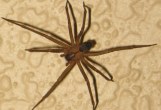

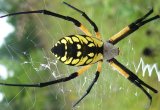

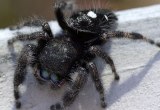




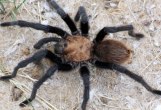
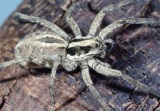





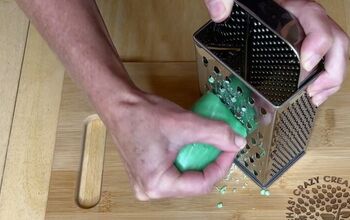
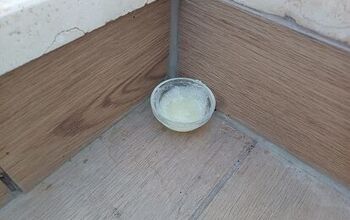

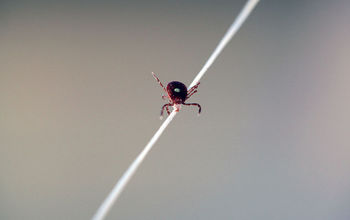





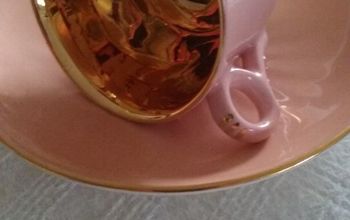








Frequently asked questions
Have a question about this project?